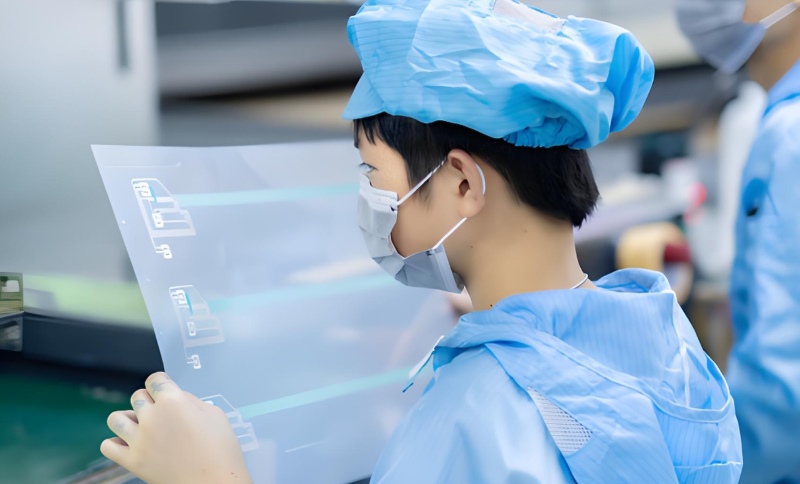Introduction
Membrane switches are crucial components in various devices, providing user interfaces that are both functional and aesthetically pleasing. This guide explores the membrane switch manufacturing process, from initial design to the final product, highlighting the benefits and applications of these innovative switches.

Product Highlights: What Are Membrane Switches?
Membrane switches are thin, flexible control panels used in electronic devices. They consist of multiple layers, including a graphic overlay, spacer, and circuit layer. These switches offer several advantages:
- Durability: Resistant to dust, moisture, and chemicals, making them ideal for harsh environments.
- Versatility: Suitable for various applications, including consumer electronics, medical devices, and industrial equipment.
- Customizability: Available in a wide range of colors, shapes, and sizes to fit different design specifications.
Solving Key Pain Points in Product Design
The manufacturing process of membrane switches addresses several pain points faced by designers and manufacturers:
- Space Constraints: Membrane switches are incredibly thin and lightweight, allowing for easy integration into compact devices.
- User Experience: They provide tactile feedback through dome switches or other designs, enhancing user interaction and satisfaction.
- Design Flexibility: With advanced printing techniques, designers can create intricate graphics and labels directly on the overlay, ensuring high-quality visuals that align with branding.
Applications of Membrane Switches
Membrane switches are used across various industries, showcasing their adaptability and utility:
- Consumer Electronics: Found in remote controls, appliances, and gaming devices, they offer a sleek interface for users.
- Medical Devices: Utilized in diagnostic equipment, infusion pumps, and patient monitoring systems, membrane switches provide reliable and hygienic operation.
- Industrial Equipment: Used in machinery and control panels, they withstand extreme conditions, ensuring operational continuity.
- Automotive Industry: Implemented in dashboards and control systems, they enhance functionality while complementing vehicle aesthetics.
Advantages of Membrane Switches
Membrane switches offer numerous advantages over traditional mechanical switches:
- Cost-Effectiveness: The manufacturing process can be optimized for cost savings, making them an economical choice for high-volume production.
- Sleek Design: The ability to integrate graphics and switch functions into one layer creates a modern look that traditional switches cannot achieve.
- Ease of Cleaning: The flat surface of membrane switches reduces dust accumulation and is easy to clean, making them ideal for hygienic environments like hospitals.
- Low Profile: Their slim design allows for seamless integration into devices, enhancing the overall product aesthetic.
The Membrane Switch Manufacturing Process
The manufacturing process of membrane switches consists of several key steps:
Design Phase: The process begins with detailed design specifications, including graphics, colors, and functional requirements. Advanced design software is used to create prototypes and ensure that all elements fit together seamlessly.
Material Selection: High-quality materials are chosen based on application requirements. Common materials include polyester and polycarbonate for overlays, and various conductive materials for the circuits.
Printing Process: Graphics and text are printed onto the overlay using advanced techniques like screen printing or digital printing. These methods ensure vibrant colors and sharp details while maintaining durability.
Layer Assembly: The layers of the membrane switch are carefully aligned and assembled. This typically involves adding adhesive layers and conducting circuits that create the switch functionality.
Testing: Each membrane switch undergoes rigorous testing to ensure functionality, durability, and performance. This includes testing for environmental resistance, electrical reliability, and user experience.
Final Inspection and Packaging: The finished products are thoroughly inspected for quality assurance before being packaged for shipment. This ensures that all switches meet the required standards before reaching the customer.
Design Selling Points
The design of membrane switches sets them apart from traditional switch technologies:
- Integrated Aesthetics: With graphics and switch elements printed directly onto the surface, membrane switches allow for a unified design that enhances brand recognition.
- Custom Shapes and Sizes: Manufacturers can produce switches in virtually any shape or size, allowing for creative freedom in product design.
- User-Centric Features: Tactile feedback, backlighting, and icons can be integrated into the design, improving usability and visual appeal.
Product Value: Why Choose Membrane Switches?
Investing in membrane switches provides significant value for businesses and manufacturers:
- Enhanced Brand Image: Custom-designed membrane switches can elevate a product's perceived value, reflecting a commitment to quality and innovation.
- Long-Lasting Performance: The durability of membrane switches reduces the need for replacements, leading to lower long-term costs.
- Adaptability: As technology evolves, membrane switches can be easily redesigned to incorporate new features or adapt to market trends, ensuring longevity in the marketplace.
Conclusion
The membrane switch manufacturing process transforms innovative designs into functional, reliable products that meet the demands of various industries. By addressing key pain points and offering unique advantages, membrane switches have established themselves as essential components in modern electronic devices. Their versatility, durability, and aesthetic appeal make them a preferred choice for manufacturers looking to enhance user experience while ensuring long-lasting performance. As technology continues to evolve, membrane switches will remain at the forefront of user interface solutions, providing significant value and adaptability in a competitive market.
